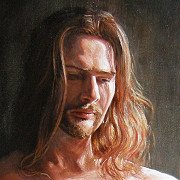What, how and why to draw. Part 2

Andrei Bulatov , Artist
10 February, 2024

Continuation of the article “What, how and why to draw”. See the beginning in my post dated February 6, 2024.
Now let's get to the "How". In my opinion, beginning artists pay too much attention to this aspect, constantly thinking that they need to find their own style, etc. In doing so, they overlook the more important components of the work they are working on. This is, to some extent, their emotional reaction to themselves. They are embarrassed by their ineptitude, their mistakes, etc. It should be noted that very often these mistakes and ineptitude turn into exactly what they are so persistently looking for - their own style.
Therefore, the answer to this question remains – as you can at the moment. If you read about great artists, look at their work in retrospect, you can see that they were not so consistent in their “How.” It is common knowledge that Picasso had a “blue period.” And Dali was at first an average realist, before moving on to “elephants on fragile thin legs.” Any artist, if he is an active, real artist, and not a businessman from painting, progresses, searches and changes his habits and techniques. So don't be afraid to create your own blue periods. It is more important to deliver the product to the mountain! Your eye and your hand will become firmer and more confident not because you will think that now you have not yet learned to draw, so you are ashamed of your paintings and you do not want to show them to anyone. This approach too often devolves into mere daydreaming or mere discussion. Your “How” will appear in the battle with your fears and “inability” and mistakes. It will appear as if by itself.
What I'm saying is don't think too much about it. It's a paradox, but it's true. It’s a paradox because it’s the “How” that distinguishes one artist from another, and it’s easy to slip into simply copying the greats. Almost always, a new artist thinks that there will always be someone who draws/writes better than him. Yes, such a situation can happen. Yes, there are more successful and more skillful people, but that’s not you. Over time, the ratings of your paintings will change. Your self-esteem too. The only thing that will not change is the freshness and uniqueness of your first works, where, although it may be naive, it is the STATE and not the OBJECT that is expressed. Yes, perhaps your STATE was not very good, the more interesting is your progress in this, and not the progress of the OBJECT.
Well, and of course, “How” is directly related to “Why” and “Why For” and these questions directly influence each other. And so we will move on to consider the answers to them. So, “Why” and “Why For”. (to be continued)




















